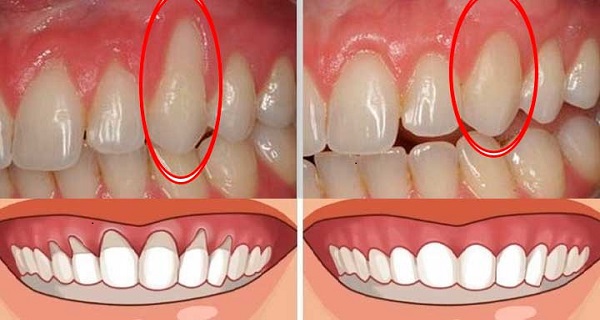Body Mechanics: Prevent Injury
Understanding and applying proper body mechanics is crucial for preventing injuries, whether in the context of daily activities, sports, or occupational tasks. The human body is a complex machine, and like any machine, it is subject to wear and tear, especially when not used correctly. Improper body mechanics can lead to strain on muscles, ligaments, and joints, resulting in pain and potentially serious injuries.
The Fundamentals of Proper Body Mechanics
Proper body mechanics involve maintaining optimal posture and movement patterns to minimize stress on the body’s musculoskeletal system. This includes standing, sitting, lifting, bending, and moving in ways that keep joints in a neutral position and distribute body weight evenly. For instance, when standing, it’s essential to keep your feet shoulder-width apart, with your knees straight but not locked, and your back straight. This foundational stance helps in maintaining balance and reduces the strain on the lower back.
Lifting Techniques
One of the most common sources of injury is lifting. Whether it’s at work, during exercise, or in daily life, lifting improperly can lead to back strains, herniated discs, and other injuries. The key to lifting safely is to maintain the natural curve of the back and use the leg muscles to do the lifting. Here are the steps to follow for safe lifting:
- Position: Stand close to the object with your feet shoulder-width apart.
- Bend: Bend at the knees, keeping your back straight.
- Lift: Lift with your leg muscles, keeping the object close to your body.
- Pivot: If you need to turn, pivot with your feet rather than twisting your back.
- Lower: Lower the object to the ground by bending your knees again, keeping your back straight.
Posture and Movement
Posture is not just about standing up straight; it’s also crucial when sitting, sleeping, or engaging in any activity. Maintaining good posture reduces the risk of developing musculoskeletal disorders and improves breathing and digestion. When sitting, ensure your chair height is correct, your feet are flat on the floor or on a footrest, your knees are at or below hip level, and your back is straight with support for the natural curve of your lower back.
Exercise and Strengthening
Regular exercise, especially core strengthening exercises, can significantly improve body mechanics by enhancing muscle support for joints and improving balance and coordination. Exercises like planks, bridges, and pelvic tilts can strengthen the core and back muscles, providing better stability and reducing the risk of injuries.
Occupational Considerations
For individuals whose jobs involve repetitive movements, heavy lifting, or prolonged periods of sitting or standing, it’s essential to take regular breaks to stretch and move around. Employers can also implement ergonomic solutions to reduce strain, such as adjustable desks, ergonomic chairs, and safe lifting equipment.
Mind-Body Connection
The mind-body connection plays a significant role in body mechanics. Stress and tension can lead to muscle tightness and altered movement patterns, increasing the risk of injury. Practices like yoga, meditation, and deep breathing exercises can help manage stress, improve flexibility, and enhance body awareness, all of which are crucial for maintaining proper body mechanics.
Technology and Body Mechanics
The advent of technology has introduced new challenges to body mechanics, particularly with the rise of sedentary behaviors associated with screen time. Prolonged sitting, especially with poor posture, can lead to a range of health issues, from back pain to cardiovascular diseases. It’s essential to balance screen time with physical activity and to practice good posture during computer use, such as keeping the monitor at eye level, keyboard directly in front, and taking regular breaks to stand up and move.
Case Study: The Importance of Proper Lifting Techniques in the Workplace
A manufacturing plant implemented a training program focused on proper lifting techniques after noticing a significant increase in workplace injuries related to lifting. The program included demonstrations, practice sessions, and regular reminders about the importance of using leg muscles for lifting and keeping the spine straight. Within a year, the plant saw a 40% reduction in lifting-related injuries, highlighting the effectiveness of proper body mechanics training in preventing injuries.
Conclusion
Preventing injury through proper body mechanics is a multifaceted approach that involves understanding the fundamentals of movement, maintaining good posture, exercising regularly, and being mindful of occupational and technological impacts on the body. By applying these principles, individuals can significantly reduce their risk of injury, improve their overall health, and enhance their quality of life.
What are the most common injuries caused by poor body mechanics?
+Poor body mechanics can lead to a variety of injuries, including back strains, herniated discs, muscle pulls, and joint pain. These injuries are often caused by improper lifting, bending, or movement that puts unnecessary stress on muscles, ligaments, and joints.
How can I improve my posture to reduce the risk of injury?
+Improving posture involves being mindful of how you sit, stand, and move. When sitting, keep your back straight, feet flat on the floor, and monitor at eye level. When standing, keep your knees slightly bent, weight evenly distributed on both feet, and back straight. Regular exercise, especially core strengthening exercises, can also help improve posture by providing better support for your spine.
What role does stress play in body mechanics and injury prevention?
+Stress and tension can significantly impact body mechanics by leading to muscle tightness, altered movement patterns, and decreased body awareness. High levels of stress can cause individuals to slouch, tighten their muscles, or move in ways that increase the risk of injury. Practices like meditation, yoga, and deep breathing can help manage stress, improve flexibility, and enhance body awareness, all of which are important for maintaining proper body mechanics and preventing injuries.


